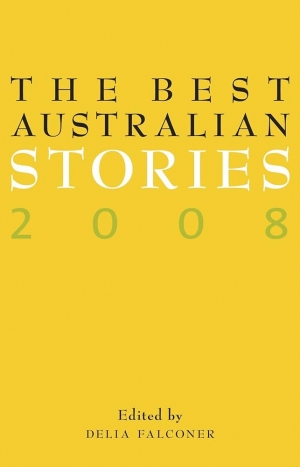Archive
Kate Goldsworthy reviews 'Making Women Count: A history of the women’s electoral lobby in Australia' by Marian Sawer
Iain Topliss reviews 'Comic Commentators: Contemporary political cartooning in Australia' edited by Robert Phiddian and Haydon Manning
Like many people, I am addicted to a segment called ‘Talking Pictures’ on the ABC’s Insiders programme, hosted by Mike Bowyers. The three minutes are over in a flash. In fact, the brevity is well judged: humour needs understatement, not overkill. Watching those cartoonists for that short time, cheerful and amused as they invariably are in the face of folly, bastardry and disaster, the viewer is lifted above the baffling maelstrom, with a cleared head, steadied balance and restored vision. Of course, it can’t last. Comic Commentators, a collection of essays investigating political cartooning in Australia, is generously illustrated by a selection of nearly 120 cartoons that represent the output of Australia’s current crop of cartoonists. Two notable absences are Michael Leunig and John Spooner, both deferred to on several occasions, but not much discussed, and not illustrated. Fourteen contributions, arriving from many directions, converge: we hear from five practising cartoonists, an editor and an art curator, an academic lawyer with expertise in defamation and sedition, a social scientist and three academics in, respectively, the disciplines of government, politics and literature and culture. It is a productive mixture.
... (read more)In his début novel, Street Furniture (2004), Matt Howard displayed a certain droll, youthful touch that endeared him to readers and critics alike. Taking Off sees him continuing in the same vein, taking another twenty-something protagonist and pushing him into unfamiliar territory, to clever effect.
... (read more)John Hay reviews 'The Age Of Wonder: How the romantic generation discovered the beauty and terror of science' by Richard Holmes
Gregory Kratzmann reviews 'Telling a Hawk from a Handsaw' by Chris Wallace-Crabbe
Chris Wallace-Crabbe has always had a good ear for a title, but Telling a Hawk from a Handsaw is surely his best. Half a century older than Shakespeare’s ghost-ridden poet–hero, he rings the changes on Hamlet’s high-fantastical play with language, by turns delighting and disconcerting an audience which might sometimes struggle to keep up with his leaps and ellipses. Ghosts and shadows abound in this distillation of his finest work from the last five years or so, but the intimations of mortality don’t mean that this book inhabits a Yeatsian ‘country for old men’. There are some curtains of Celtic darkness, but the soul of this poet–singer rejects tattered coats and sticks, swaggering, as the introductory poem has it, ‘On the Side of Life, / suntanned here in the lost antipodes / of childhood’s yellow beach and glaucous water’.
... (read more)Glyn Davis reviews 'The American Future: A History' by Simon Schama
As he stepped down from the podium at the Gettysburg battlefield in 1863, President Abraham Lincoln was unhappy. The speech was short and finished abruptly. The crowd was slow to clap. Lincoln turned to friend and occasional bodyguard Ward Lamon. ‘That speech won’t scour,’ he told Lamon. ‘It is a flat failure, and the people are disappointed.’
... (read more)Jeffrey Poacher reviews 'The Best Australian Stories 2008' by Delia Falconer (ed.)
‘I like sad girls,’ confesses the creepy narrator of ‘His Blue Period’, the story by Deborah Robertson that opens the latest anthology of short fiction from Black Inc. It is never entirely clear what form this liking took. The narrator’s intentions were undoubtedly sexual, but not just that. What he seemed to desire most of all was the story of each girl’s sadness – the telling of her particular tale of woe, ‘the full, heavy, sad, sweet works’ which blossomed (at least in his mind) like a magnolia. And how did he elicit such revelation? Simply by asking each of his melancholy companions about her childhood; it is there, he supposes, that true sorrow first takes root. Robertson’s story is sinisterly opaque, not least because the tables are eventually turned on the predatory narrator (the past tense of his opening confession is surely significant in that respect). Things start to fall apart after his brief encounter (a late-night quickie) with a woman who boldly describes her childhood as ‘lots of laughs’. This entanglement precipitates such a crisis of confidence in him that he suddenly has the urge to redecorate his yuppie apartment: ‘I wanted to go downstairs and take the car from the garage and drive out of the city to the suburbs, and in the unfamiliar streets I wanted to find a Bunnings.’ There is a deft comic touch here, but the dominant note is indeed a blue one, suggesting a vast metropolis of inexplicable sorrow.
... (read more)Jay Daniel Thompson reviews 'Whatever Happened To Brenda Hean?' by Scott Millwood
Whatever Happened to Brenda Hean? focuses on the unsolved disappearance of the eponymous figure. Hean was an environmental activist who vanished in 1972 while flying to Canberra to campaign against the destruction of Tasmania’s Lake Pedder, which was to be flooded for a hydro-electric scheme. The text is written by documentary film-maker Scott Millwood, who ‘offered a $100,000 reward for information that would lead to an answer to the mystery’.
... (read more)Jay Daniel Thompson reviews 'The Trip' by George Papaellinas
The Trip is what happens when Ancient Greek mythology is mixed with Australian history. In a breezy 175 pages, George Papaellinas provides a rewriting of Homer’s Odyssey. He also revisits various highlights (and lowlights) from our country’s past. The result is an amusing and highly idiosyncratic read.
... (read more)









